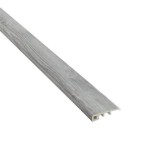When it comes to installing vinyl plank flooring, you may be wondering if you need to use an underlayment. This type of flooring is usually moisture-resistant and can be installed directly on the subfloor, but using an underlayment may be beneficial in some cases. Here’s what you need to know about underlayment and vinyl plank flooring.
The Benefits of an Underlayment
An underlayment is a thin layer of material that is placed between the subfloor and the vinyl plank flooring. It can provide many benefits, including sound dampening, improved insulation, and better protection against moisture. An underlayment can also help to level out the flooring and provide cushioning, which can make the floor more comfortable to walk on.
When Is an Underlayment Necessary?
In most cases, it is not necessary to use an underlayment when installing vinyl plank flooring. However, there are some cases where it can be beneficial. If the subfloor is uneven, using an underlayment can help to level it out. An underlayment can also provide extra protection against moisture if the subfloor is prone to dampness. If the vinyl plank flooring is being installed over concrete, an underlayment can help to reduce the amount of noise that is transmitted through the floor.
Types of Underlayment for Vinyl Plank Flooring
When choosing an underlayment for vinyl plank flooring, it is important to make sure that it is compatible with the type of flooring being installed. There are many different types of underlayment available, including foam, cork, and felt. Foam underlayment is often the most affordable option and is suitable for most types of vinyl plank flooring. Cork and felt underlayment are more expensive, but they can provide better insulation and sound dampening.
Installing Underlayment for Vinyl Plank Flooring
Installing an underlayment for vinyl plank flooring is relatively simple. The underlayment should be placed over the subfloor and cut to fit the room. It should be secured in place with adhesive, screws, or another suitable method. Once the underlayment has been installed, the vinyl plank flooring can be laid over it.
Conclusion
Underlayment can provide many benefits when installing vinyl plank flooring. It can help to level out the flooring, provide extra insulation and sound dampening, and protect against moisture. If the subfloor is uneven or prone to dampness, using an underlayment is recommended. There are many different types of underlayment available, and installing it is relatively straightforward.















Related Posts








